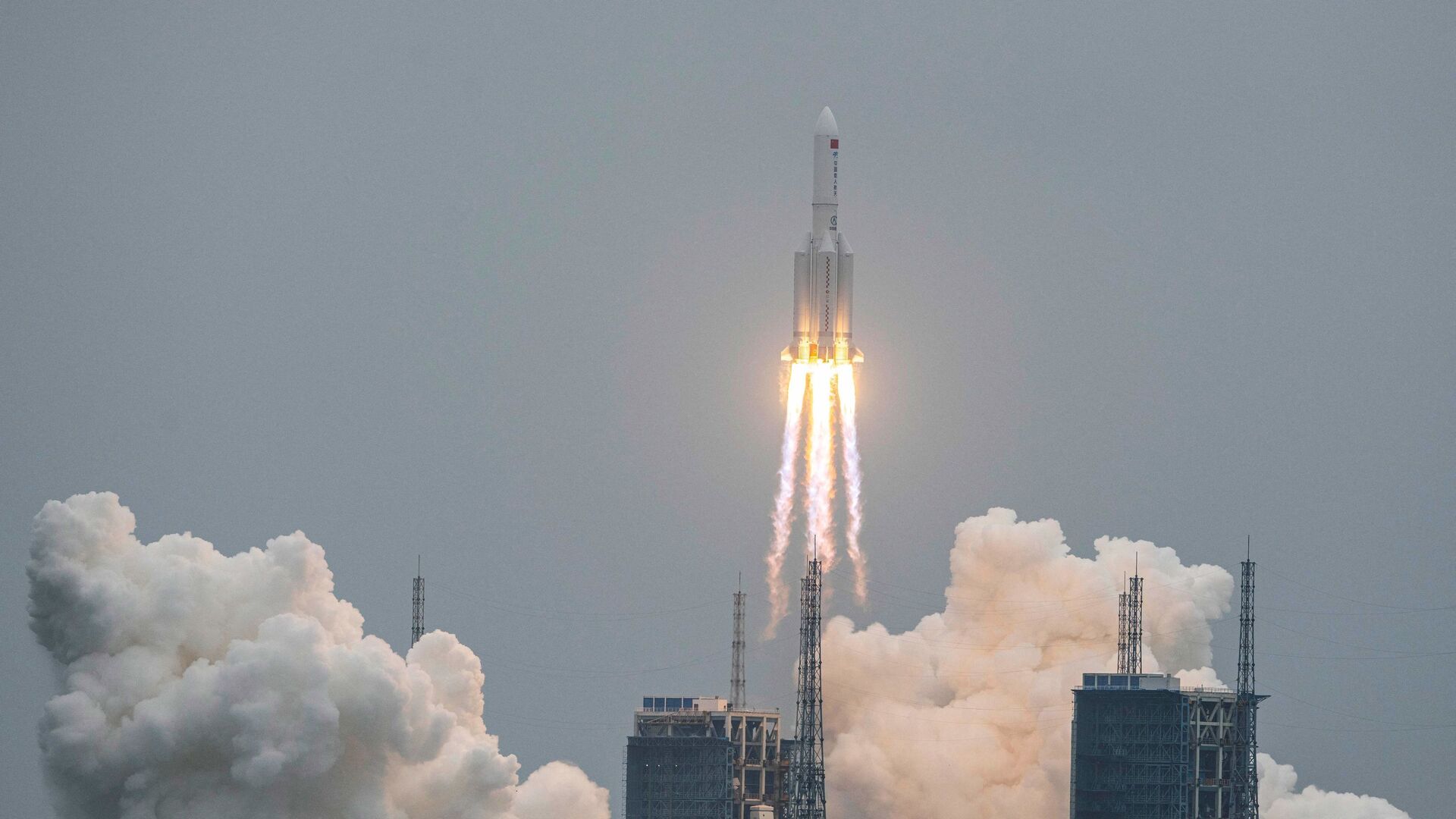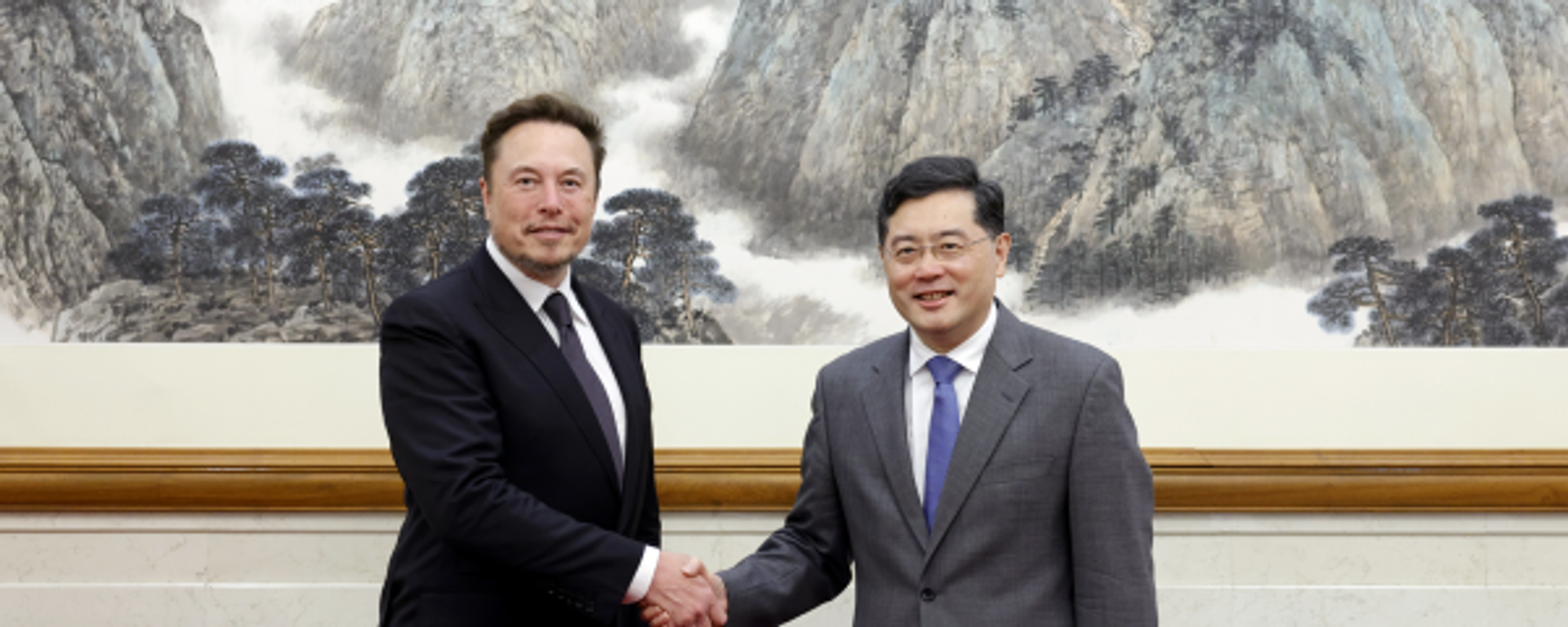https://sputnikglobe.com/20230530/beijing-vows-to-put-taikonauts-on-moon-by-2030-1110802864.html
Beijing Vows to Put Taikonauts on Moon by 2030
Beijing Vows to Put Taikonauts on Moon by 2030
Sputnik International
Lin Xiqiang, the deputy director of the Chinese Manned Space Agency, told reporters on Tuesday that China would prepare for a “short stay on the lunar surface and human-robotic joint exploration” before 2030.
2023-05-30T20:22+0000
2023-05-30T20:22+0000
2023-05-30T20:17+0000
world
china
moon
moon landing
tiangong space station
space flight
https://cdn1.img.sputnikglobe.com/img/07e5/05/07/1082822605_0:0:3072:1728_1920x0_80_0_0_4baeda05b56d195d20e5770af0b1ce2b.jpg
Lin Xiqiang, the deputy director of the Chinese Manned Space Agency (MSA), told reporters on Tuesday that China would prepare for a “short stay on the lunar surface and human-robotic joint exploration” before 2030."Our astronauts will walk on the moon, collect samples around the landing site and perform some in-situ research. This will lead off our manned missions from low-Earth orbit to deep space and help deepen mankind's knowledge about the origin and evolution of the moon and the solar system," he added.The announcement came as the MSA chalked up another accomplishment: launching its first civilian taikonaut into space. Gui Haichao blasted off with two other taikonauts on the Shenzhou-16 mission from Jiuquan Satellite Launch Center early Tuesday. Unlike his crewmates, Jing Haipeng and Zhu Yangzhu, Gui is not enlisted in the People’s Liberation Army’s Astronaut Corps, he is an aerospace engineer and University of Beijing professor.The taikonauts will spend six months doing research on China’s new Tiangong space station, being replaced in October by the Shenzhou-17 crew.Its ambitions for manned missions to the moon have long been stated, although the timeline for them has been pushed back by snags such as problems with the Long March-5 Y2 rocket.China isn’t the only country that’s pledged to put humans back on the moon: Russia’s Roscosmos has also pledged to put cosmonauts on the lunar surface by 2030, and the United States has begun testing its Orion spacecraft for manned lunar missions. The US space agency NASA has said it hopes to return to the moon by 2025 at the earliest. All three countries have announced plans for permanently inhabited bases on the moon.To date, only 12 humans have set foot on the lunar surface - all of them American, the last of whom visited our only natural satellite in 1972. The Soviet Union had plans for manned lunar missions, but its program also hit snags and was eventually canceled.
https://sputnikglobe.com/20230530/elon-musk-tells-chinese-fm-qin-gang-he-opposes-decoupling-us-from-beijing-1110799785.html
china
Sputnik International
feedback@sputniknews.com
+74956456601
MIA „Rossiya Segodnya“
2023
News
en_EN
Sputnik International
feedback@sputniknews.com
+74956456601
MIA „Rossiya Segodnya“
Sputnik International
feedback@sputniknews.com
+74956456601
MIA „Rossiya Segodnya“
moon; china; 2030; taikonaut; lunar landing
moon; china; 2030; taikonaut; lunar landing
Beijing Vows to Put Taikonauts on Moon by 2030
China’s space program has been a key part of the socialist country’s high-tech revolution, with the government investing heavily in the myriad industries necessary to support space travel. In turn, a new generation of satellites has buttressed its rapidly growing economy as well as its military prowess.
Lin Xiqiang, the deputy director of the Chinese Manned Space Agency (MSA), told reporters on Tuesday that China would prepare for a “short stay on the lunar surface and human-robotic joint exploration” before 2030.
"The overall goals are to realize China's first manned landing on the moon before 2030, carry out scientific exploration and related technological demonstrations on the lunar surface, develop a commutation and short-term stay system for crews, and develop human-robot integrated testing and other key technologies," Lin said.
"Our astronauts will walk on the moon, collect samples around the landing site and perform some in-situ research. This will lead off our manned missions from low-Earth orbit to deep space and help deepen mankind's knowledge about the origin and evolution of the moon and the solar system," he added.
The announcement came as the MSA chalked up another accomplishment: launching its first civilian taikonaut into space. Gui Haichao blasted off with two other taikonauts on the
Shenzhou-16 mission from Jiuquan Satellite Launch Center early Tuesday. Unlike his crewmates, Jing Haipeng and Zhu Yangzhu, Gui is not enlisted in the People’s Liberation Army’s Astronaut Corps, he is an aerospace engineer and University of Beijing professor.
The taikonauts will spend six months doing research on China’s new Tiangong space station, being replaced in October by the Shenzhou-17 crew.
China’s space program, which began with a satellite launch in 1970 and first saw a manned space mission in 2003, has leaped forward in recent years.
Tiangong is the country’s third space station and by far its largest, and it has sent robotics missions to the moon and to Mars, including a first for humanity: putting a rover on the far side of the moon.
Its ambitions for manned missions to the moon have long been stated, although the timeline for them has been pushed back by snags such as problems with the Long March-5 Y2 rocket.
China isn’t the only country that’s pledged to put humans back on the moon: Russia’s Roscosmos
has also pledged to put cosmonauts on the lunar surface by 2030, and the United States has begun
testing its Orion spacecraft for manned lunar missions. The US space agency NASA has said it hopes to return to the moon by 2025 at the earliest. All three countries have announced plans for permanently inhabited bases on the moon.
To date, only 12 humans have set foot on the lunar surface - all of them American, the last of whom visited our only natural satellite in 1972. The Soviet Union had plans for manned lunar missions, but its program also hit snags and was eventually canceled.



